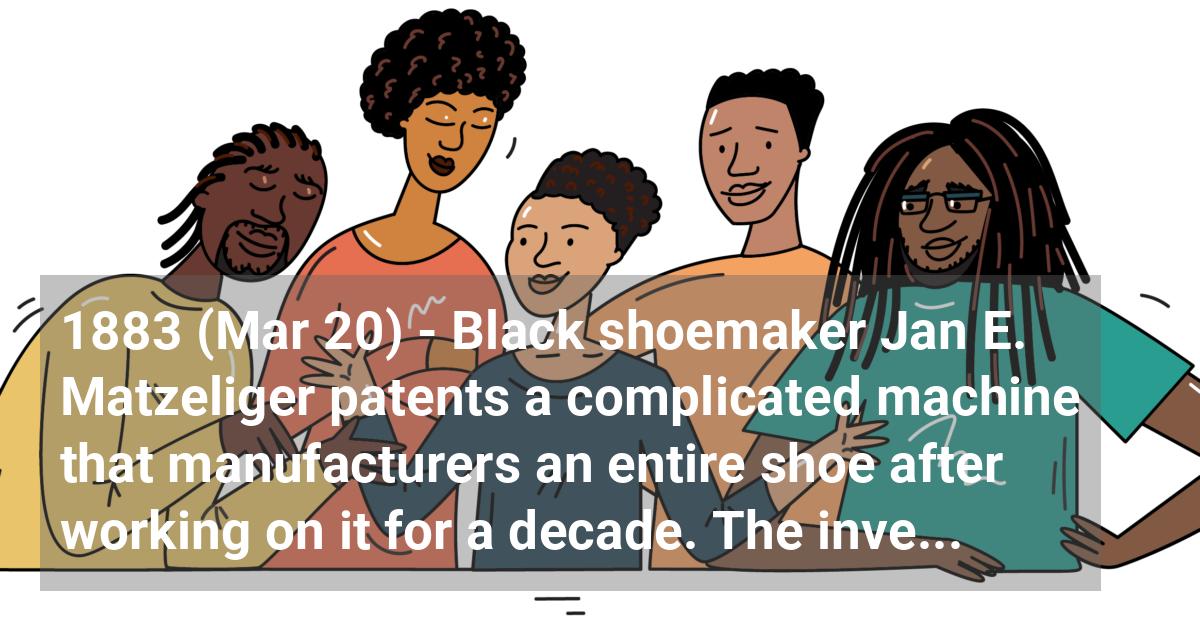Home / Full timeline / Black shoemaker Jan E. Matzeliger patents a complicated machine that manufacturers an entire shoe after working on it for a decade. The invention is sold to United Shoe Company and revolutionizes the industry.
 Black shoemaker Jan E. Matzeliger patents a complicated machine that manufacturers an entire shoe after working on it for a decade. The invention is sold to United Shoe Company and revolutionizes the industry.
Black shoemaker Jan E. Matzeliger patents a complicated machine that manufacturers an entire shoe after working on it for a decade. The invention is sold to United Shoe Company and revolutionizes the industry.
1883 (Mar 20)
Jan E. Matzeliger, a Massachusetts shoemaker, invented a complicated machine that manufactured an entire shoe. The invention, which was sold to the United Shoe Company, revolutionized the industry. By 1880, machines were able to cut and stitch the leather, but not to shape and attach the upper portion of the shoe to the sole. This had to be done by hand, a slow and tedious process. Working in secret, Matzeliger tackled the "lasting" problem for ten years. In 1883, he received the patent for his perfected product, a "lasting machine," which could hold the shoe on the last, grip and pull the leather down around the heel, set and drive the nails, and discharge the completed shot.
References:
- • Hornsby, Alton. Chronology of African-American History: Significant Events and People from 1619 to the Present. Detroit: Gale Research, 1995.
